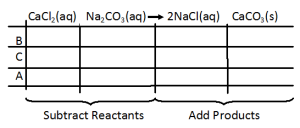(I am basing this internal dialogue off of a conversation I had with a co-worker last year.)
Me: Is it possible to pass your class while still failing an assignment?
Traditional Me: yes, but we review the material several times in class so, they will still learn it.
Me: Can they get those questions wrong on the test but still pass the test?
Traditional me: Possibly, but they will still need to know it for the final.
Me: Can they fail that test but still pass the class?
Traditional Me: sure, but they won’t get a good grade, besides, they will still need to know it for the final exam.
Me: can they miss those questions that pertain to the questions they missed from the assignment, the review, and test, and still pass the final exam?
Traditional Me: I suppose, it’s possible.
Me: Then why do you teach that particular material?
Traditional Me: Because they need to know it in order to pass the class/ it’s part of the curriculum.
Me: You just said they can pass the class without needing to know it.
Traditional me: So, what am I supposed to do? We can use that logic for anything I teach in my class.
Me: Only if you assess their work the way you currently do.
Traditional me: but changing the way I teach and grade is one hell-of-a lot of work.
Me: yep.
Traditional me: Why should I change everything I do now at this late stage in my career?
Me: Why do you teach?
